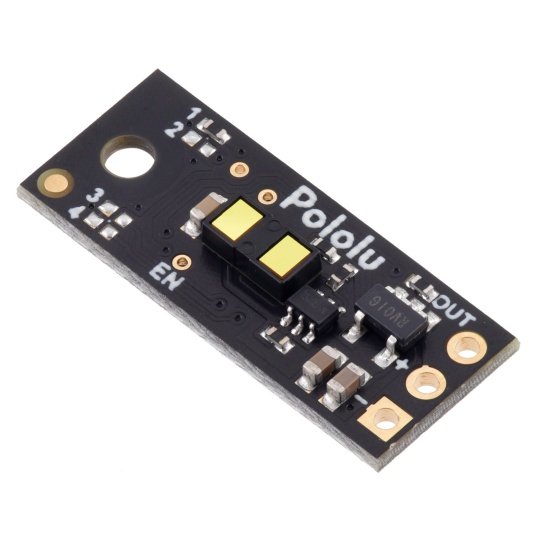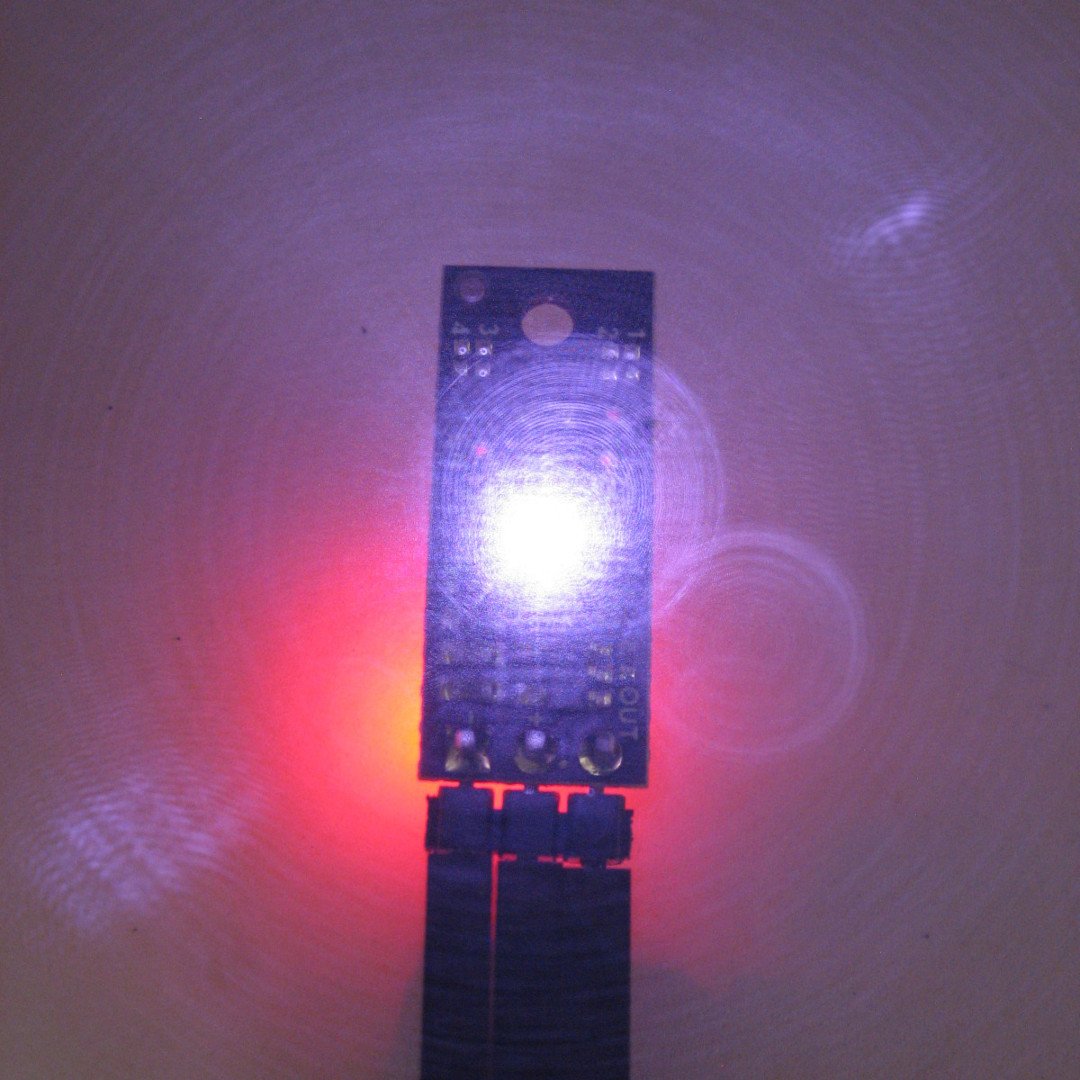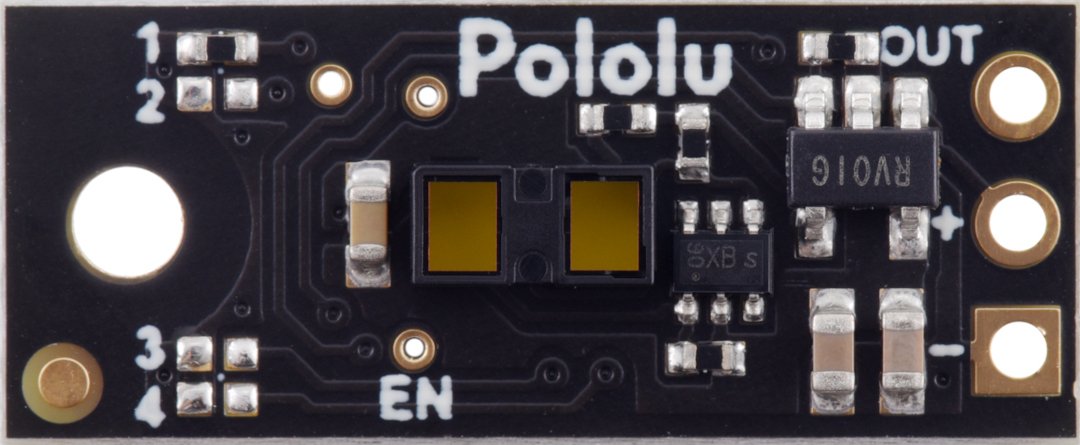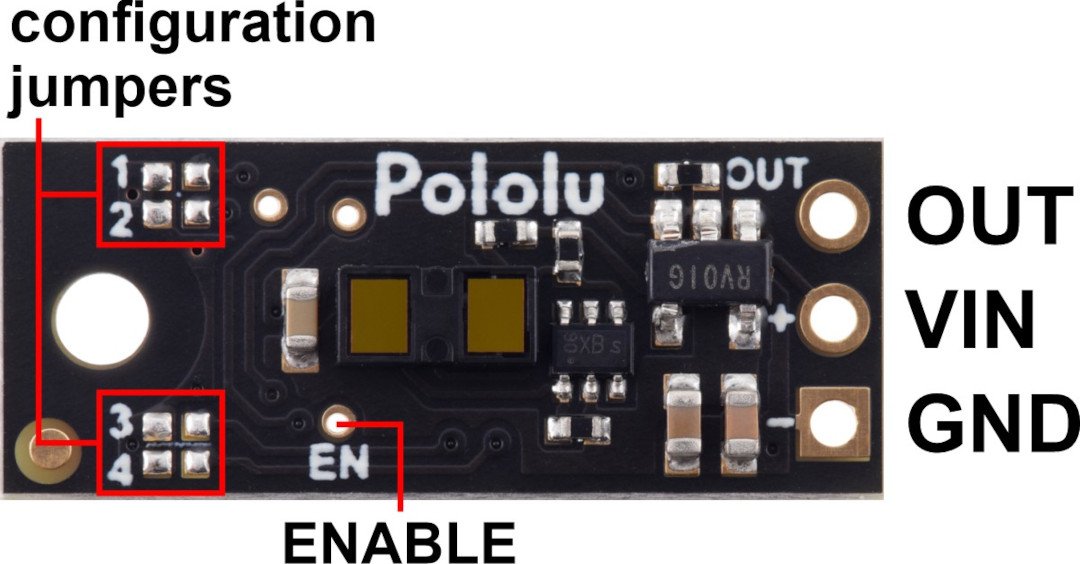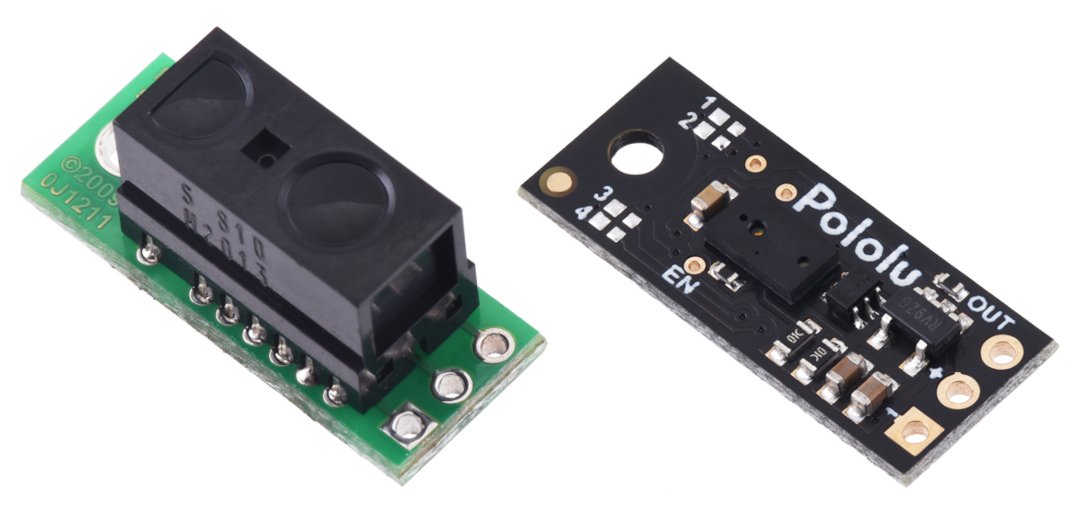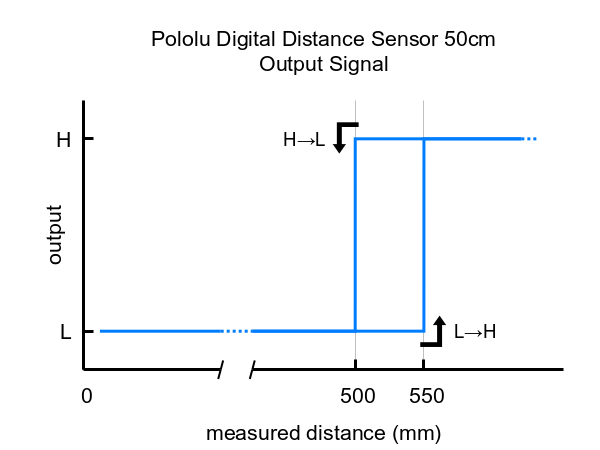Product description: Digital distance sensor 50cm - Pololu 4067
Adistance sensorboard based onLidartechnology. The sensor operates within a range ofup to 50cmand is poweredfrom 3V to 5.5V. It is equipped with one digital output that changes its state to low when an object is detected. Thesensor module does not measure distance, it only informs about the detection of an obstacle within 50 cm with an accuracy of1 mm. The short range Lidar technology is used toprecisely measurethe time it takes for the emitted pulses of eye-safe infrared light to reach the nearest object and be reflected back.
Application example
- Alternative brake light sensor and photobeam
- Non-contact sensor for robot collision or obstacle
- A non-contact interface element for activating a device or process
- Counter or timer for objects as they pass by
Using the distance sensor
The module has 3 leads:VIN, GND and OUT,in the form of holes with a 2.54 mm raster, with solderablegoldpin connectors(not included). VIN pin is used to power modulefrom 3V to 5.5V, GND is system ground pin (0V). OUT pin shows low state (0 V) when object is detected and high state (up to VIN level) when no object is detected. TheredLEDalso lights up when an object is detected. There is also an ENABLE pin on the board that can be set low to put it into a low power state, which consumes about 0.4 mA of current. The ENABLE pin is pulled up to VIN by default.
There is a protective film on the sensor that must be removed before working with the module.
Jumper settings on the sensor module
The board contains four surface mount configuration jumpers (4321) that determine its operating modes. Different versions of Pololu sensors have the jumpers set appropriately as 0 Ω resistors. The resistors can be soldered out or bridges can be added to convert one version of the sensor into another. This sensor can be converted to any other version of irs17a according to the table below.
| Product | Description | Range max. | Hysteresis | Distribution | Minimum update frequency | Jumper settings (4321) |
|---|---|---|---|---|---|---|
| #4066 | Digital output, 25 cm | 25 cm | 50 mm | - | 100 Hz | 0000 |
| #4067 | Digital output, 50 cm | 50 cm | 50 mm | - | 100 Hz | 0001 |
| Digital output, 75 cm | 75 cm | 50 mm | - | 100 Hz | 0010 | |
| #4069 | Digital output, 100 cm | 100 cm | 50 mm | - | 100 Hz | 0011 |
| Digital output, any detection | ~130 cm | - | - | 100 Hz | 0010 | |
| #4071 | PWM output, max. 130 cm | ~130 cm | - | 1 mm (- 0.5 µs) | 100 Hz (max. 110 Hz) | 0101 |
| Digital output, 125 cm | 125 cm | 50 mm | - | 30 Hz | 1000 | |
| Digital output, 150 cm | 150 cm | 50 mm | - | 30 Hz | 1001 | |
| Digital output, 175 cm | 175 cm | 50 mm | - | 30 Hz | 1010 | |
| #4077 | Digital output, 200 cm | 200 cm | 50 mm | - | 30 Hz | 1011 |
| Digital output, any detection | ~300 cm | - | - | 30 Hz | 1100 | |
| #4079 | PWM output, max. 300 cm | ~300 cm | - | 2 mm (= 0.5 µs) | 30 Hz (max. 33 Hz) | 1101 |
Comparison with Sharp sensor
The Pololu sensor modules have the sameshape and pin-outsasthe Sharp modules. They are available with the same and larger sensing ranges, which means that they can be usedinterchangeably. The sensors on the newer Pololu devices aremuch thinnerthan the Sharp modules, so the zero point is about 7mm closer to the board, and the beam angle on the newer devices is wider.
Pololu distance sensor specifications
- Supply voltage: 3 V to 5.5 V
- Current consumption: 30 mA (typical) when switched on, 0.4 mA when switched off
- Maximum range: 50 cm
- Minimum range: up to 1 mm
- Minimum update rate: 100 Hz (10 ms period)
- Field of View (FOV): typically 15°, may vary depending on object reflection and environmental conditions
- Output Type: digital signal (low when object detected, high otherwise)
- Dimensions: 21.6 x 8.9 x 3.5 mm
- Weight: 0.4 g
